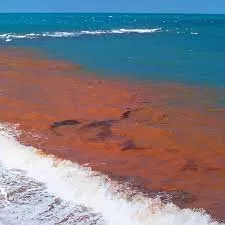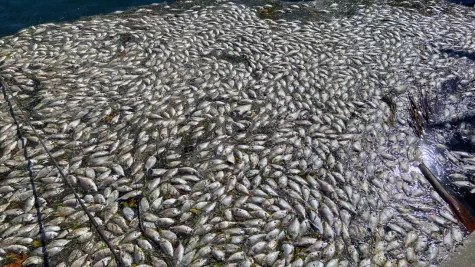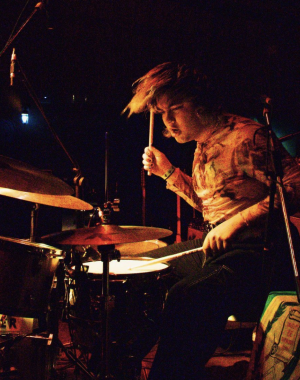The Red Tide: An Ongoing Crisis

This image captures the visual effect the red tide has on the seas.
December 12, 2022
Most remember when they first heard of red tide.
They saw in on the news and in newspapers which featured images of thousands of fish and other marine animals like dolphins, sharks, and manatees dead, bloated, and rotting on our beaches.
But what caused the red tide and what steps are being done to prevent it?
The red tide has been around Florida for centuries; it has been documented in certain Spanish explorers’ journals dating back to the 1500s.
The red tide is a microscopic algae that blooms and produces toxins that kills fish and makes shellfish dangerous to eat, but it is not just the toxins that kill the fish. When algae grows, it sucks in the oxygen from the water therefore lowing the oxygen levels and suffocating fish and marine mammals.
When a large bloom happens such as the one that in late 2017 which lasted all the way to early 2019, it destroys the underwater ecosystem. Small fish are the first to go and then the larger fish and their predators start to die from eating the infected fish. The final result are beaches clogged with thousands of dead and sun bloated animals that make breathing unbearable. The toxic algae also affects human, although not seriously. For some exposed humans, there is a noticeable cough that comes from the middle of the chest when a person inhales the red tide micro particles in the air.
So how come the red tide has been around for so long, but only now we hear about it in the news?
That would be because the kill off of marine animals reached an unprecedented number.
The algae that makes the red tide is aided by the dumping of chemicals in the water. According to a thesis published by Fordham University, sugar plantations and their use of fertilizer run off into Lake Okechobee effectively provide the perfect breeding ground for the red tide algae.

Fortunately, for us in South Florida we are not affected by the red tide because it does not travel down the coast.
Nonetheless, many Floridians and environmentalists have become more aware of the effects of the red tide in order to take action to mitigate the devastating loss of marine life.














